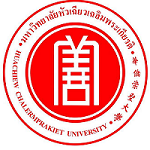Please use this identifier to cite or link to this item:
https://has.hcu.ac.th/jspui/handle/123456789/4050Full metadata record
| DC Field | Value | Language |
|---|---|---|
| dc.contributor.author | Jamroonsri Poomtien | - |
| dc.contributor.author | Thayawee Thanasukhonphat | - |
| dc.contributor.author | Napawee Songmark | - |
| dc.contributor.author | Sasitorn Jindamorakot | - |
| dc.contributor.author | Jiraporn Thaniyavarn | - |
| dc.contributor.author | จำรูญศรี พุ่มเทียน | - |
| dc.contributor.author | ศศิธร จินดามรกฎ | - |
| dc.contributor.author | จิราภรณ์ ธนียวัน | - |
| dc.contributor.other | Huachiew Chalermprakiet University. Faculty of Science and Technology | en |
| dc.contributor.other | Huachiew Chalermprakiet University. Faculty of Science and Technology | en |
| dc.contributor.other | Huachiew Chalermprakiet University. Faculty of Science and Technology | en |
| dc.contributor.other | National Center for Genetic Engineering and Biotechnology. Bioresources Technology Unit | en |
| dc.contributor.other | Chulalongkorn University. Faculty of Science | en |
| dc.date.accessioned | 2025-06-20T08:13:34Z | - |
| dc.date.available | 2025-06-20T08:13:34Z | - |
| dc.date.issued | 2015 | - |
| dc.identifier.uri | https://has.hcu.ac.th/jspui/handle/123456789/4050 | - |
| dc.description | Burapha University International Conference 2015 “Moving Forward to a Prosperous and Sustainable Community”, 10-12 July 2015, Bangsaen, Chonburi, Thailand : 839-847. | en |
| dc.description.abstract | Biosurfactants are important bioactive compounds which have ability to reduce surface tension and increase the solubility. In this present study, yeast strain NJP 25 isolated from the rotten oil palm bunches was found to be a biosurfactant-producing yeast, conspecific identified as Candida mucifera. This work aimed to study the yeast growth and biosurfactant activities and test the antibacterial activity of crude biosurfactants produced from yeast using agar well diffusion and micro-dilution method in order to determine the minimum inhibitory concentrations (MIC) and the minimum bactericidal concentration (MBC). As a result, Candida mucifera NJP25 was the first reported as a biosurfactant producing yeast, showed the best performance of antibacterial activity. The cultivation for yeast NJP25 was performed at 30°C in shake flask at 200 rpm with a medium containing 2% glucose and 2% palm oils as carbon sources, 0.4% NaNO3 and 0.1 % yeast extracts as nitrogen source with an initial pH of 5.5. The maximum growth was obtained on day 9 at 3.78 g L-1 . The maximum biosurfactant activities in cell free supernatant was on day 7 which significantly reduced from 53.3 mN m-1 to 34.2 mN/m of medium surface tension (ST value 19.1 mN/m) . Their antimicrobial properties by using agar well diffusion showed that it had maximum effects against Gram positive and Gram negative bacteria. MIC values against the growth of Bacillus subtilis, Escherichia coli and Staphylococcus aureus were 1.953 mg/ml and Pseudomonas aeruginosa at 3.906 mg/ml. In addition MBC values could destroy bacterial E. coli and S. aureus at 3.906 mg/ml, B. subtilis and Ps. aeruginosa at 7.81 mg/ml. This preliminary study exhibited that the biosurfactants derived from yeast, Candida mucifera NJP25, has the advantage that it uses in cosmetics and pharmaceuticals application. | en |
| dc.language.iso | en_US | en |
| dc.rights | มหาวิทยาลัยบูรพา | en |
| dc.subject | Biosurfactants | en |
| dc.subject | สารลดแรงตึงผิวชีวภาพ | en |
| dc.subject | Candida mucifera NJP25 | en |
| dc.subject | Yeast | en |
| dc.subject | ยีสต์ | en |
| dc.subject | Agar well diffusion | en |
| dc.subject | Minimum Inhibitory Concentration | en |
| dc.subject | การหาค่าความเข้มข้นต่ าสุดที่สามารถยับยั้งการเจริญของเชื้อ | en |
| dc.subject | อาหารเลี้ยงเชื้อ | en |
| dc.subject | Culture media (Biology) | en |
| dc.title | Biosurfactant act as antimicrobial properties produced by Candida mucifera NJP25 | en |
| dc.type | Proceeding Document | en |
| Appears in Collections: | Science and Technology - Proceeding Document | |
Files in This Item:
| File | Description | Size | Format | |
|---|---|---|---|---|
| Biosurfactant-act-as-antimicrobial-properties-produced-by-Candida-mucifera-NJP25.pdf | 722.32 kB | Adobe PDF | View/Open |
Items in DSpace are protected by copyright, with all rights reserved, unless otherwise indicated.
